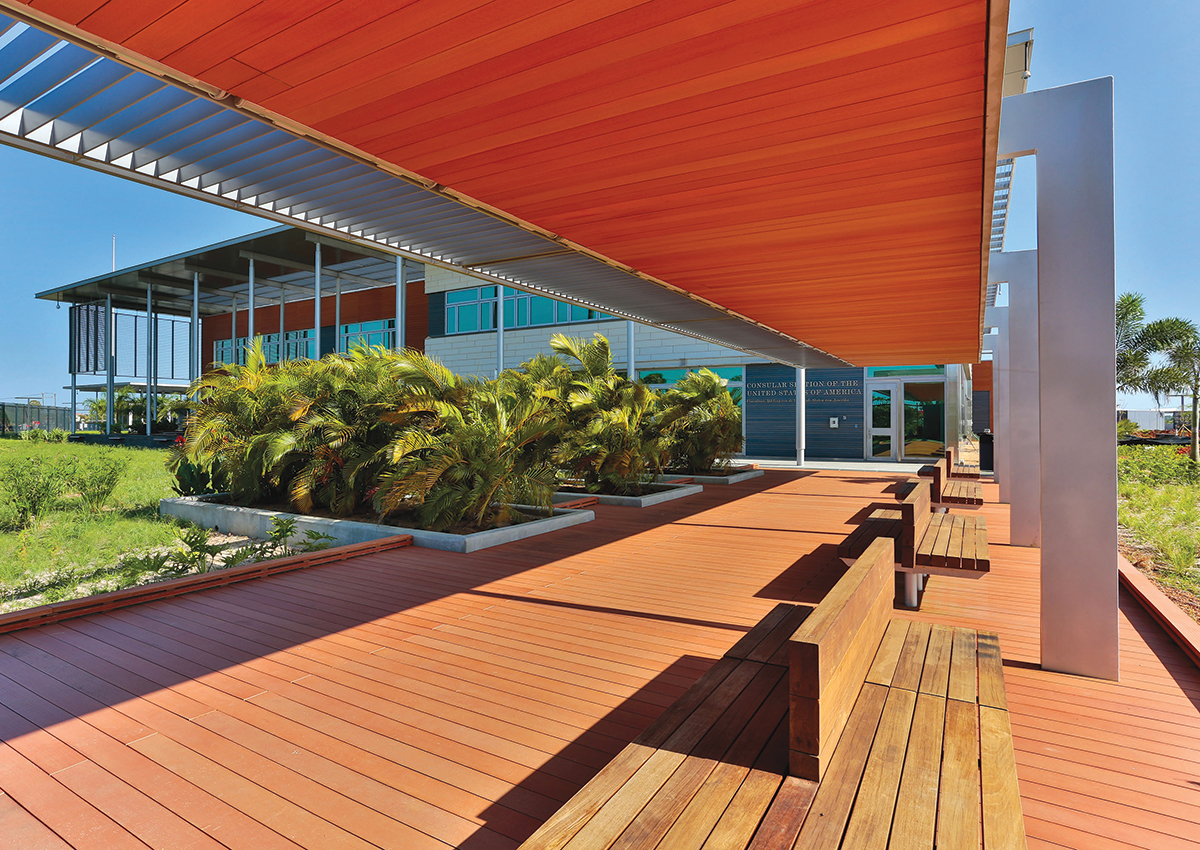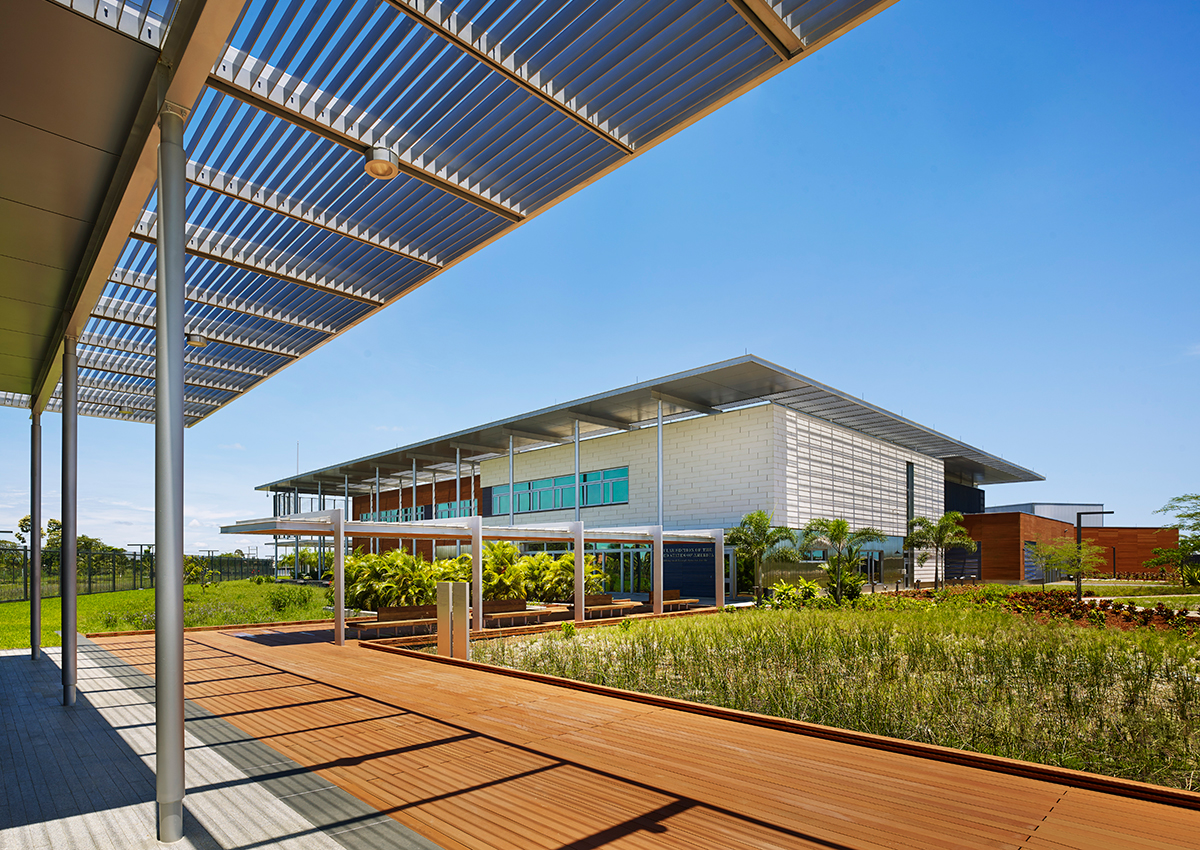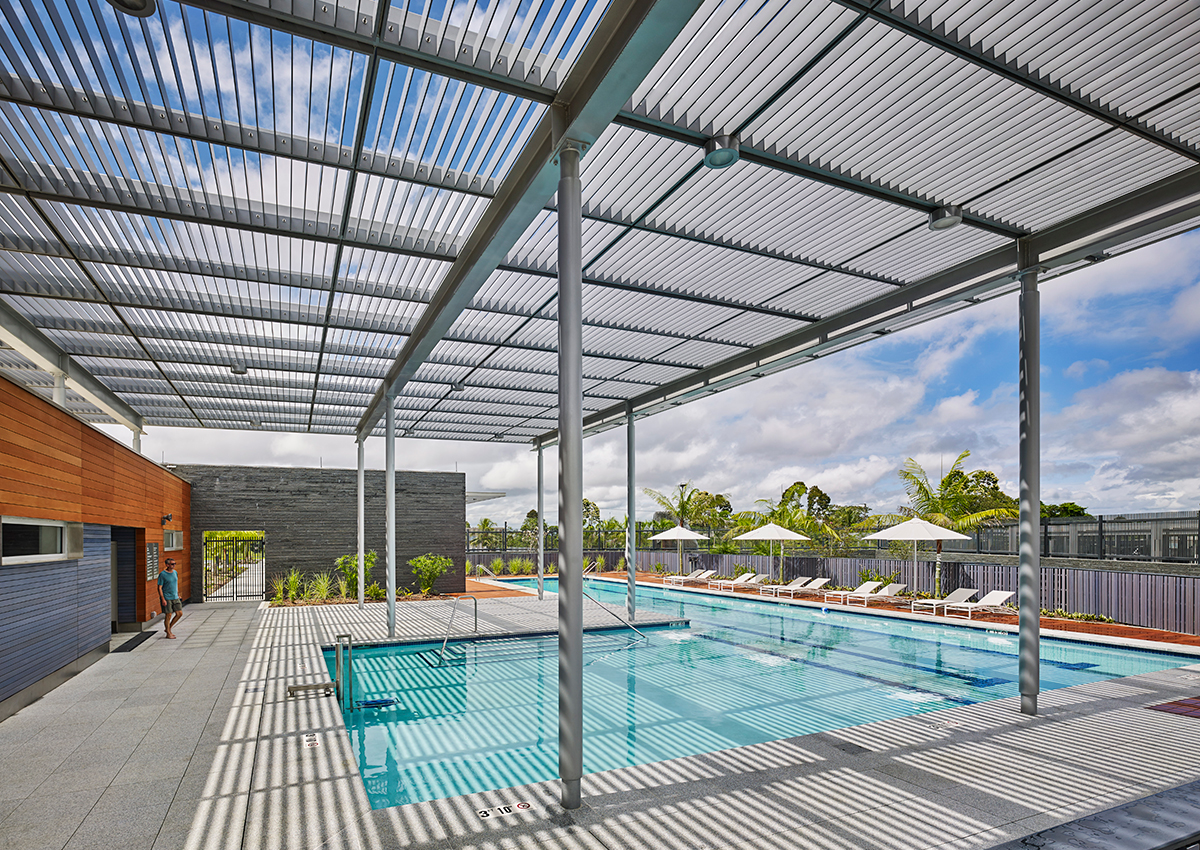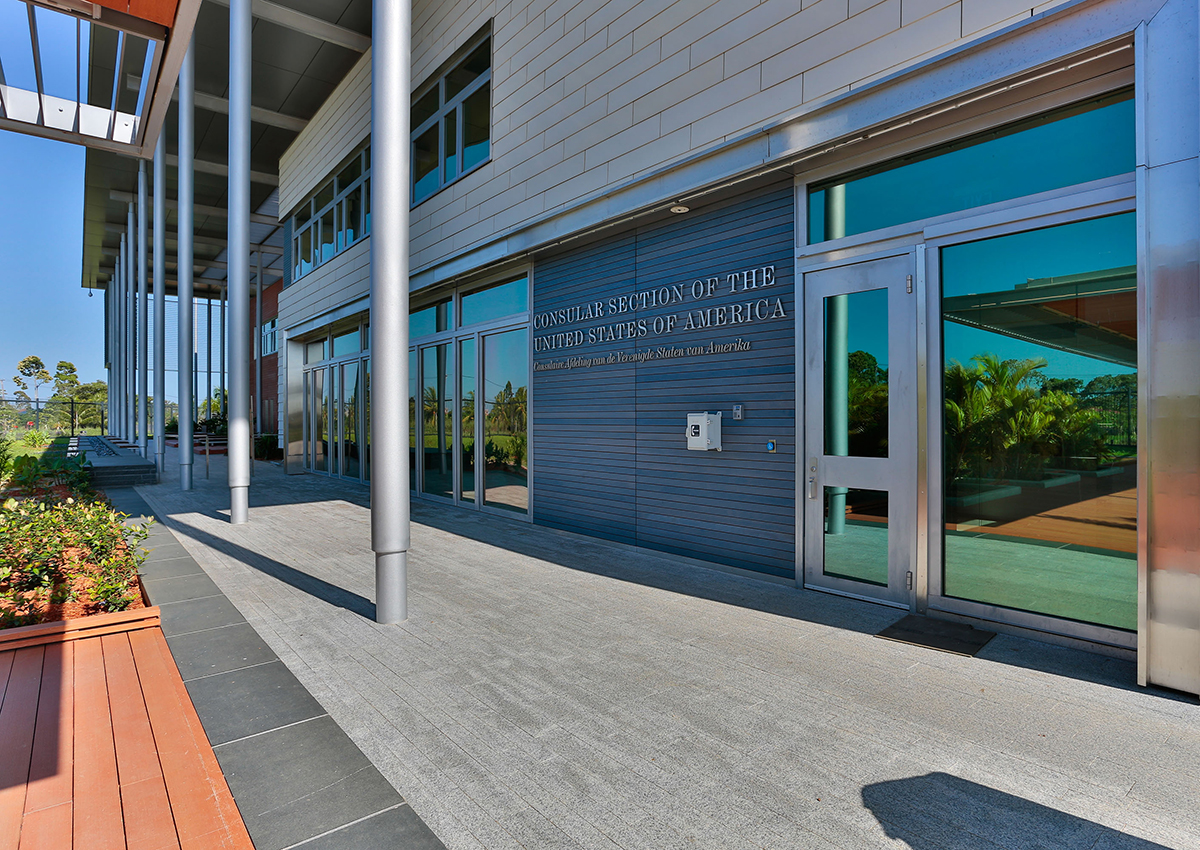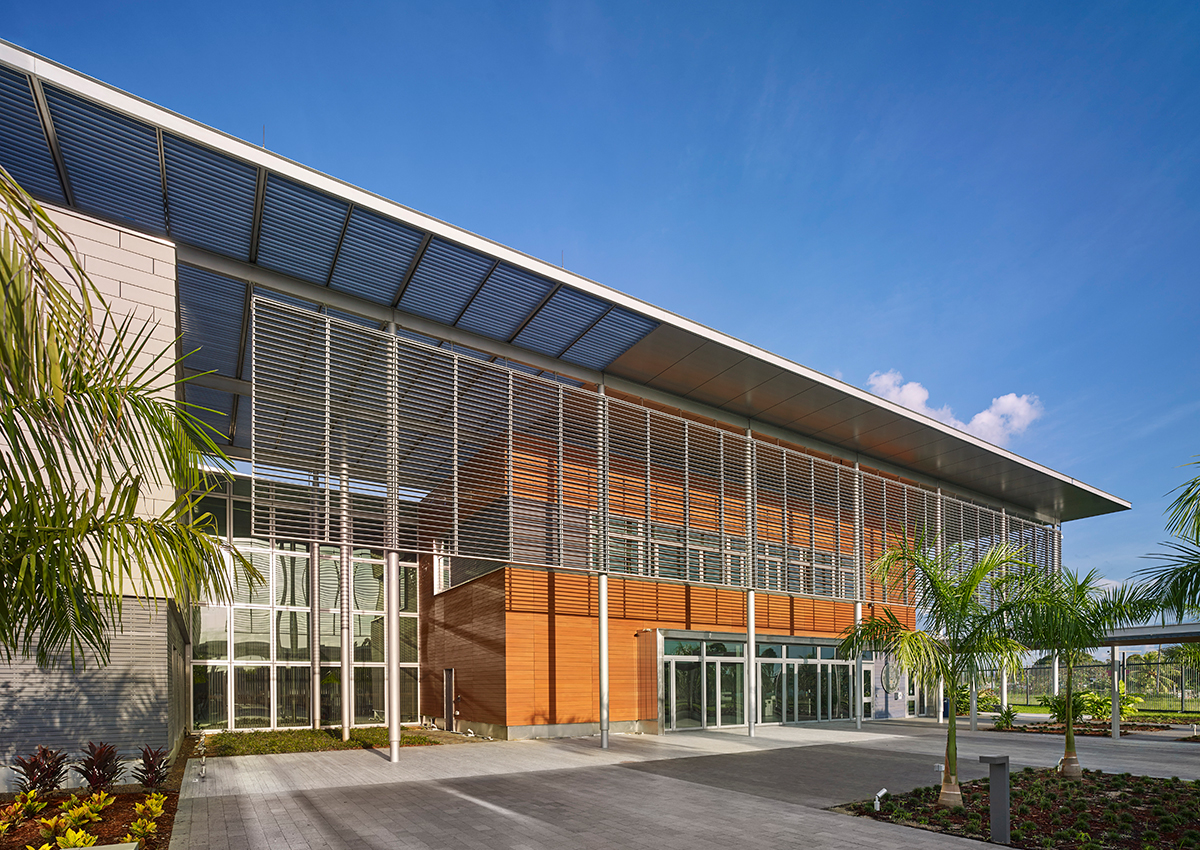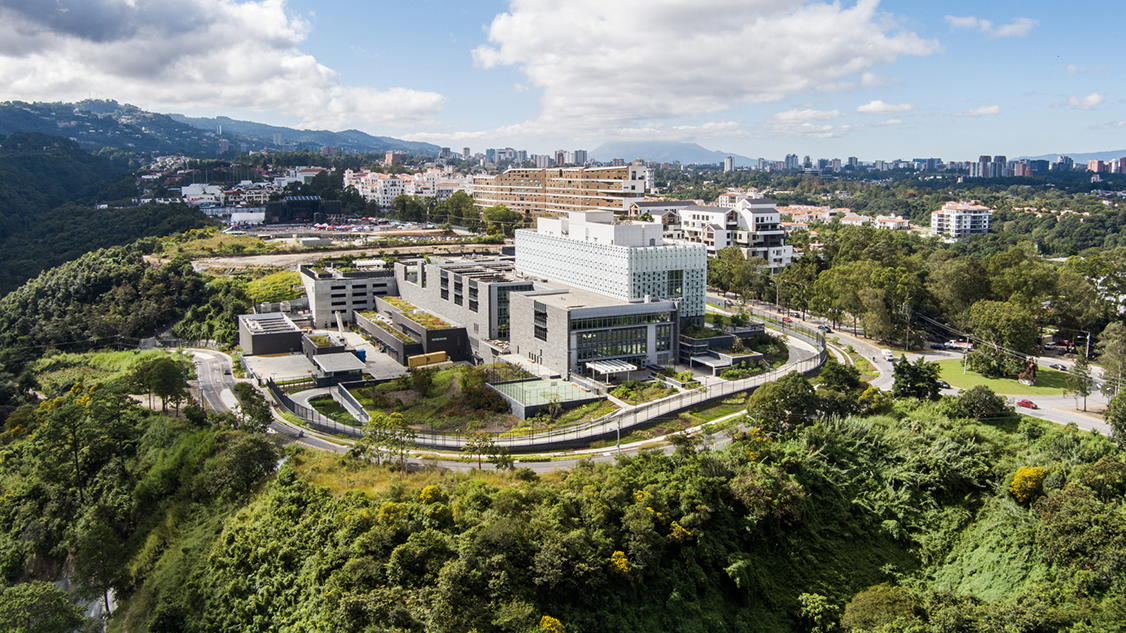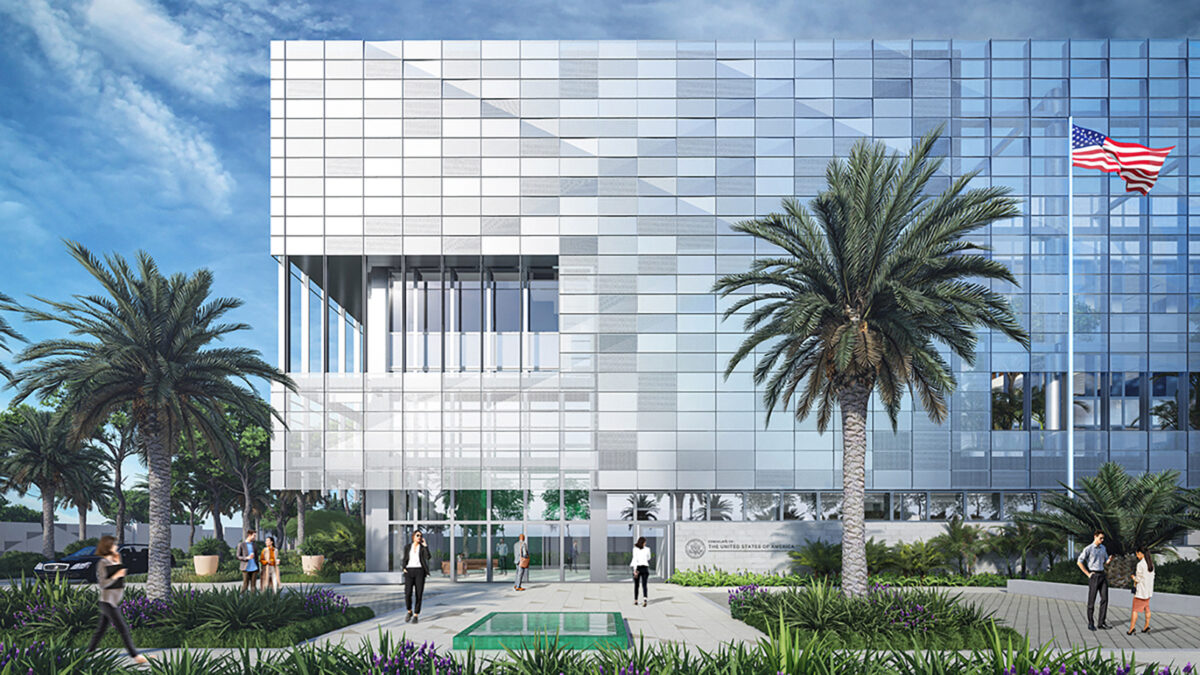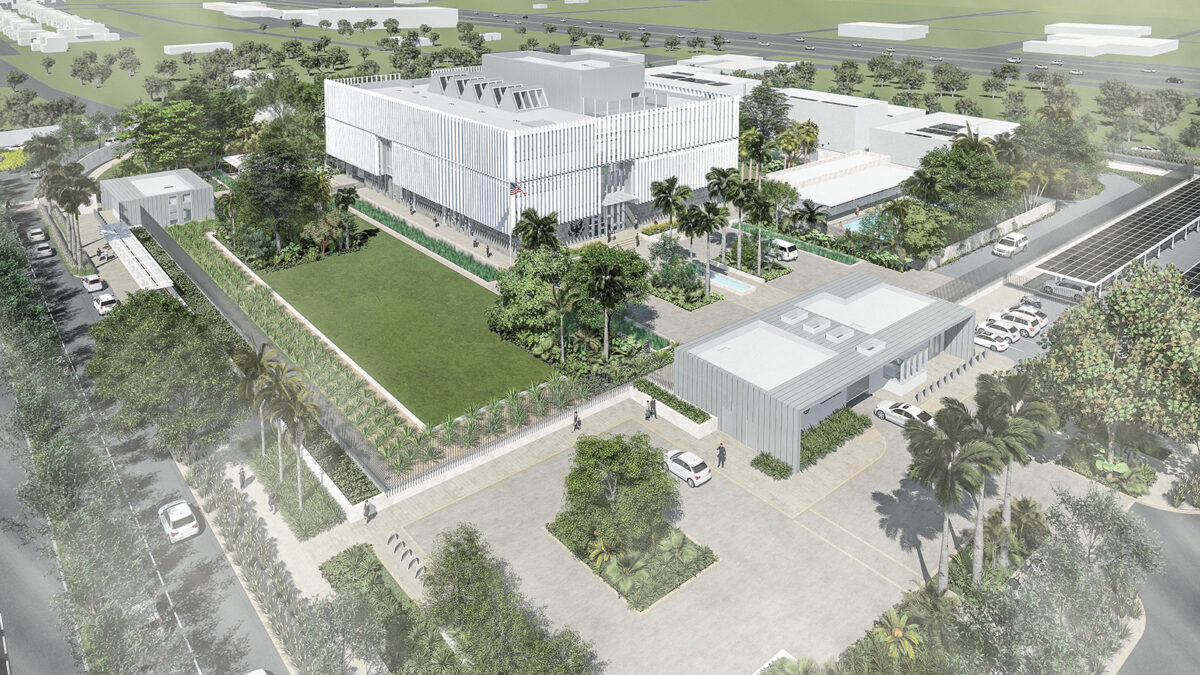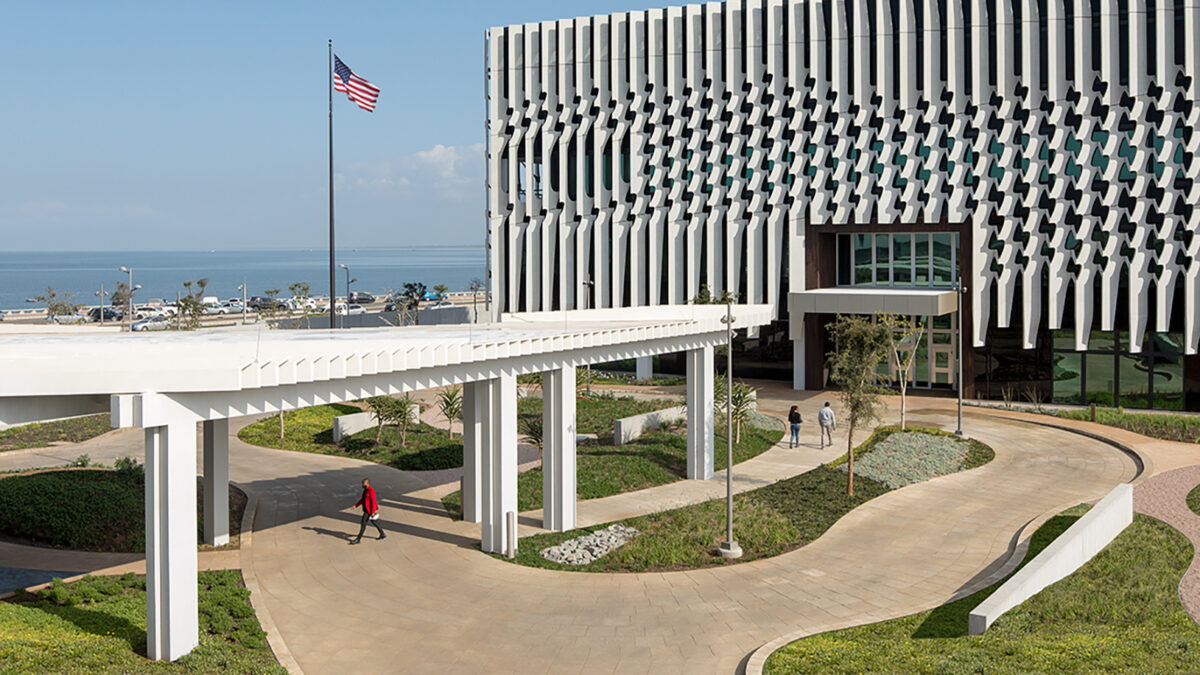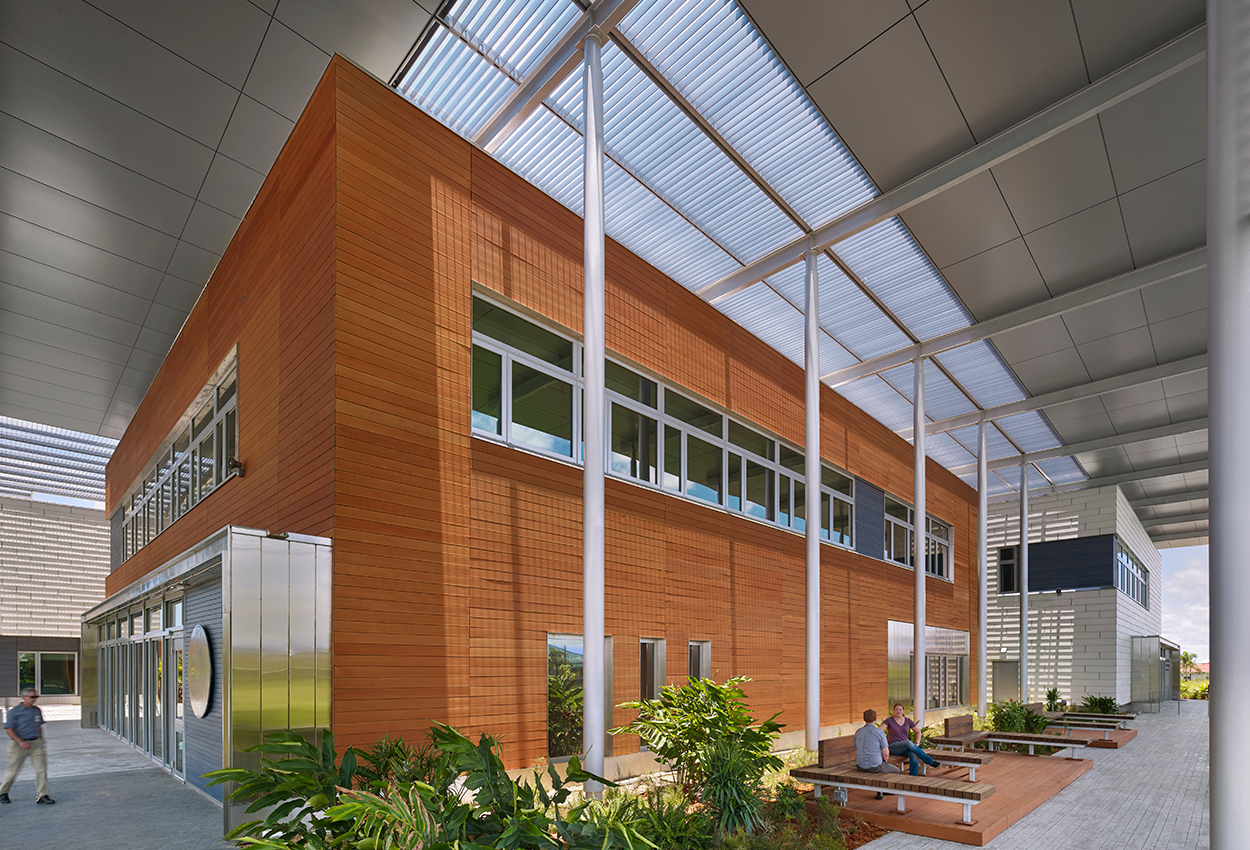
The U.S. Embassy in Suriname speaks the local language within its walls and throughout its landscape design. The Paramaribo, Suriname embassy promotes cross-cultural dialogue with landscape design gestures and exterior artwork that capture the culture of this South American country.
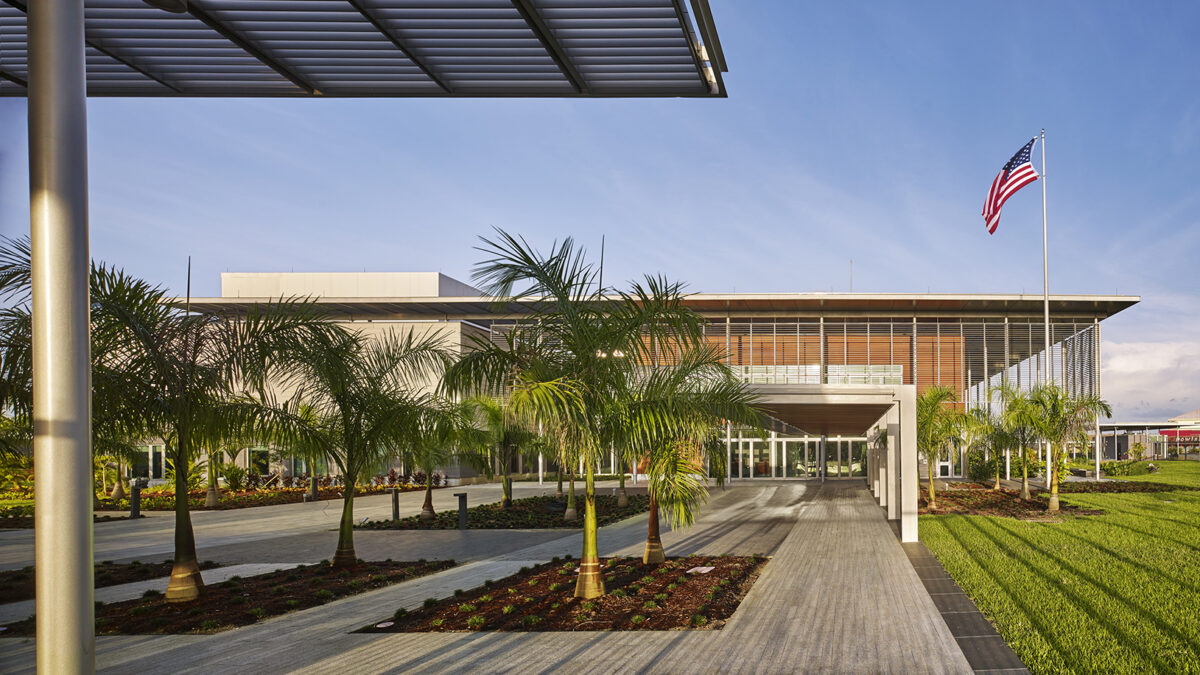
Knot Studio principals found copious design inspiration in the surrounding local ecosystems. Just six miles from the Atlantic Ocean, the Paramaribo embassy captures nearly 1,000 cubic meters of rainwater annually to be re-used on site. Sustainably designed in its structure and site, the embassy is projected to reduce energy costs by 22 percent from baseline standards through high-efficiency lighting and HVAC systems. The captured rainwater is harvested, filtered, treated, and re-used for potable and non-potable demands. Landscape design that focuses on efficiently capturing and using rainwater reflects Knot Studio’s recognition of Suriname’s rich biodiversity — much of which is made possible through an ample supply of fresh water.
Colonized by Europeans more than 400 years ago, Suriname gained independence nearly 40 years ago. The embassy celebrates the history of indigenous communities with interior and exterior artworks, including works by Surinamese artists Marcel Pinas and Remy Jungerman. American sculptor Foon Sham was commissioned to create “Vessel of Cloud” near the embassy entrance, using local greenheart wood. The LEED Silver project achieves designers’ goals of respecting indigenous conservation in a multi-building design designed to high safety and sustainability standards.
